Introduction
What is life if not little memories recorded in our brain’s memory card?
For some whose stronghold isn’t their memory (like me), it helps out a lot if those memories were in photo form and on an actual memory card. Make your memories unforgettable and keep them around you for the long run by selecting the best camera for snowboarding.
Whether it’s the best action camera you’re looking for or something more dense and hefty, the below list and consecutive buying guide are here to help you out.
With the proper guidance and tips for buying a snowboarding camera, you’re bound to become an expert outdoor photographer in no time.
Product
Details
Best Overall

GoPro HERO11
- Material: PVC
- Item Weight: 0.33 Pounds
High-End Option

INSTA360 X
- Material: Plastic
- Item Weight: 0.396 Pounds
Good Quality Pictures

Canon PowerShot G9
- Material: Metal/Plastic
- Item Weight: 0.80 Pounds
Compact Design

SONY RX100 VII
- Material: Plastic/Metal
- Item Weight: 0.66 Pounds
Most Versatile

GoPro Max
- Material: aluminum
- Item Weight: 1.85 Pounds
Most Durable
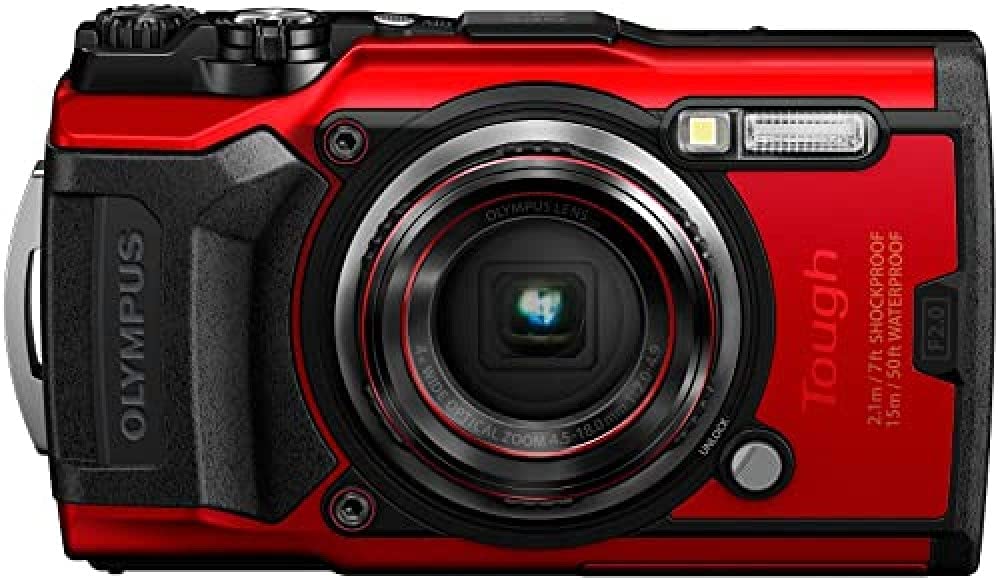
OLYMPUS TOUGH
- Material: Polycarbonate
- Item Weight: 0.55 Pounds
Pocket Friendly
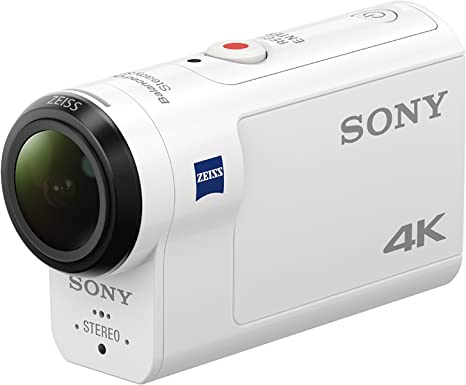
SONY FDR-X3000R
- Material: PVC
- Item Weight: 0.25 Pounds
Best Waterproof
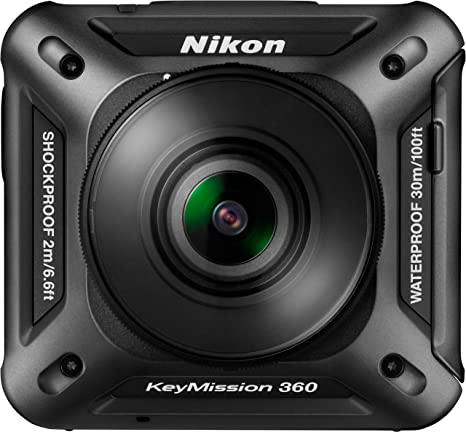
Nikon KeyMission
- Material: aluminum,glass
- Item Weight: 0.43 Pounds
Best Camera For Snowboarding (Top Picks)
1. GoPro HERO11 Black
Number one on the list, and for good reason!
The GoPro Hero 11 is titled one of the best cameras in the market by experts and critics alike. With the finest steady cam mode settings, this camera produces the smoothest videos as it has three stabilization choices to choose from.
You also get other brilliant effects and features like Wi-fi connectivity, live streaming, time warp, HDR, voice control, touchscreen capabilities, and much more. Although it comes at a pretty hefty price, there are a bunch of knockoffs in the market at a more affordable rate.
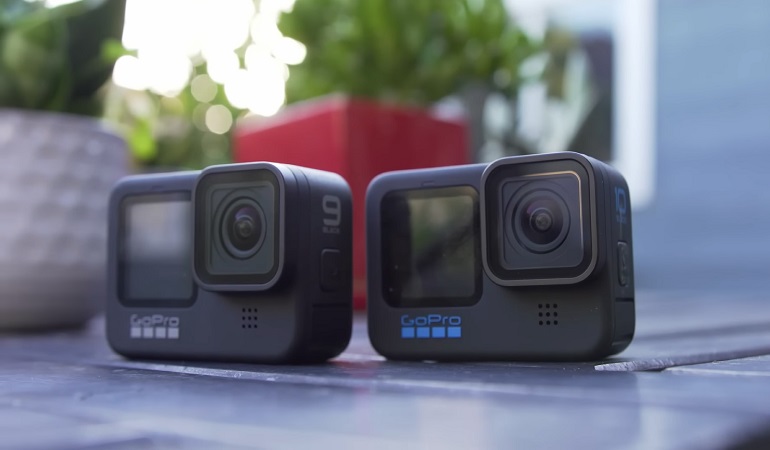
Features
- Camera Type: Action Camera
- Resolution: 27 MP Photo / 5.3K 60 FPS video
- Waterproof: Yes
- Focal Length: Adjustable
- Weight: 153 g

GoPro HERO11 Black
The Price of “GoPro HERO11 Black” varies, so check the latest price at
2. INSTA360 X
Yet another total banger in the market! The Insta360 X is a high-quality camera with FlowState stabilization, a 360-touch display, and an insanely good 5.7K video feature.
It doesn’t stop there as it also has some high-end AI editing features, a dual-lens shooting system for 360-degree footage that looks exactly like an invisible selfie stick effect.
This effect is specifically wonderful for shooting videos where a lot of action and movement are involved. But don’t worry, there will be no shakiness in the end result as it also has excellent image stabilization.
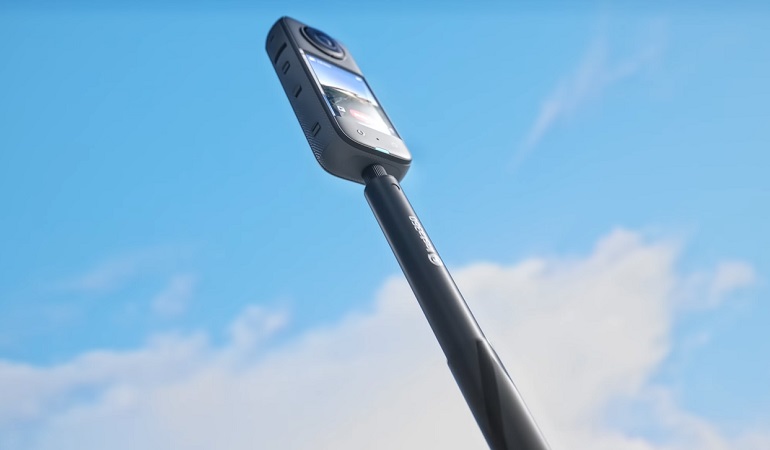
Features
- Camera Type: Action Camera
- Resolution: 48 MP photo / 5.7K 360 video
- Water Resistance: Yes
- Focal Length: Adjustable
- Weight: 179 g
3. Canon PowerShot G9 X Mark II
Primarily a picture camera that shoots the clearest photos, don’t be fooled by the Canon Powershot! It can also shoot some pretty impressive videos in 1080P HD quality.
Although this model is a small one, it still has an LCD screen on it and an f/2 aperture with ISO settings adjustable up to a value of 12,800.
You don’t have to be an expert at photography to know that these features are pretty high-tech for such a small and compact phone. Not to mention the Digic 7 image processor that churns out your snaps in perfect quality for framing, and poster printing even.
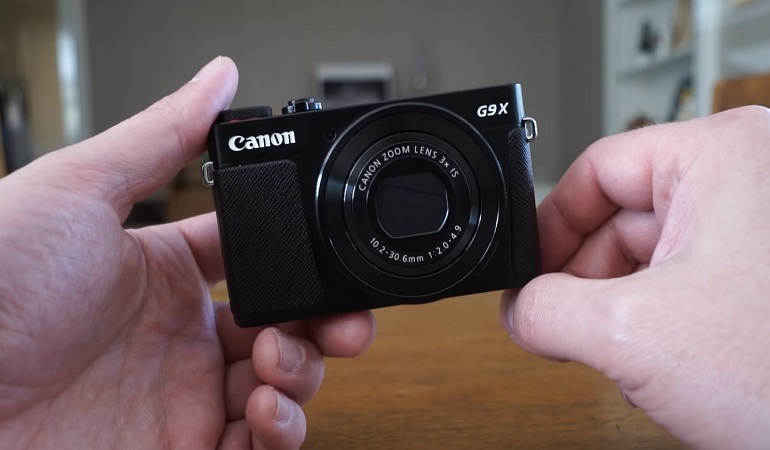
Features
- Camera Type: Point & Shoot
- Resolution: 20.1 MP photo / 1080p video
- Water Resistance: No
- Focal Length: 28 – 84 mm
- Weight: 205 g

Canon PowerShot G9 X Mark II
The Price of “Canon PowerShot G9 X Mark II” varies, so check the latest price at
4. SONY RX100 VII
We’re all about pocket cameras in this list!
The Sony RX100 comes with a CMOS sensor that reduces digital noise and generates clearer photos in low-light conditions. Moreover, the 24-200mm lens paired with a 425-point focus system ensures you a clear focus on subjects, regardless of how far you are zooming in on them.
The Eye AF system also adds the neat feature of detecting the eyes of any person in the frame.
And that’s not it! This camera records videos in 4K quality, but if you’re looking for some extra spice, check out the 180-degree flipping screen that allows you to completely flip your perspective and capture footage from a new angle.

Features
- Camera Type: Point & Shoot
- Resolution: 20.1 MP Photo / 4K Video
- Water Resistance: No
- Focal Length: 24 – 200 mm
- Weight: 304 g

SONY RX100 VII
The Price of “SONY RX100 VII” varies, so check the latest price at
5. GoPro Max
GoPro Max is tailored and customized to suit outdoor adventurers. The best thing about this camera? It brings you 3 different camera experiences all in one! Yea, no joke.
If you’re using a single lens, your footage will look a lot like the GoPro Hero final results. If not that, then try using multiple cameras to capture footage from a 360-degree angle in a whopping 6K resolution.
To top it off, you also get HyperSmooth stability on all shots.
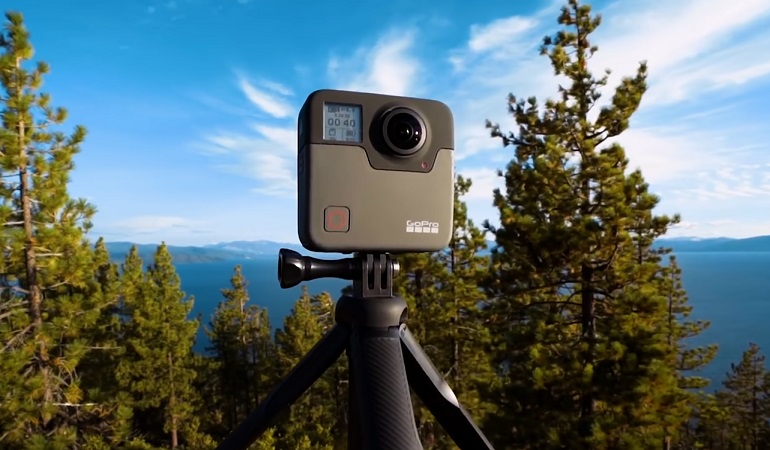
Features
- Camera Type: Action Camera
- Resolution: 6k Video
- Water Resistance: Yes
- Focal Length: 8.9 mm
- Weight: 163 g

GoPro Max
The Price of “GoPro Max” varies, so check the latest price at
6. OLYMPUS TOUGH TG-6
So really, how tough is the Olympus Tough TG-6? Well, let’s see!
It’s waterproof for up to 15 meters of submersion, shock resistant for up to a 2 meters drop, dustproof, and withstands temperatures low as -10º C. However, if there is any drawback to these Olympus tough cameras, it is the lack of good image stabilization.
It is clearly noticeable where there is shakiness and a bit of blurriness around the edges. But it kind of compensates for that with its macro shooting mode, Wi-Fi connectivity, adjustable focal length, and excellent video shooting.
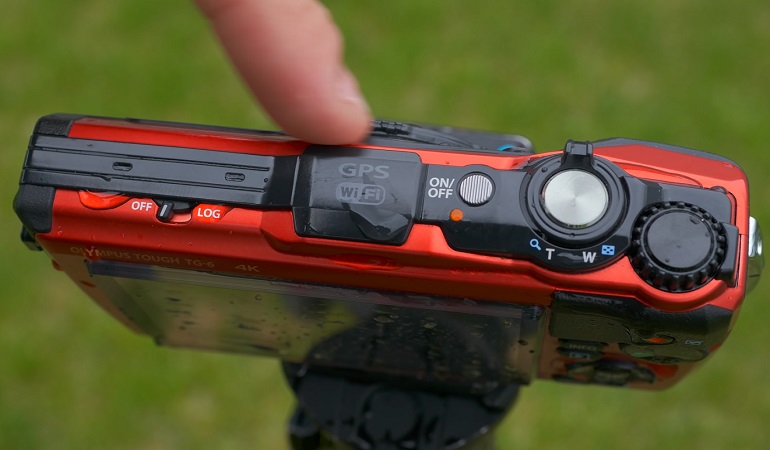
Features
- Camera Type: Tough Camera
- Resolution: 4k Video
- Water Resistance: Yes
- Focal Length: 25 – 100 mm
- Weight: 253 g

OLYMPUS TOUGH TG-6
The Price of “OLYMPUS TOUGH TG-6” varies, so check the latest price at
7. SONY FDR-X3000R
The Sony FDR is lighter than the GoPro Hero, and that’s saying a lot!
If the previous models were, super compact and pocket-friendly and were in competition with this one, Sony would win!
I’ve heard personal accounts of people who used this camera before and have mentioned that they chose it over the GoPro Hero just because of its CMOS sensor + Zeiss lens. These 2 features guarantee videos of spectacular precision and quality.
Moreover, compared to the GoPro, this one produces less distorted images. When technically speaking, both models have similarly amazing features, so the end choice just lies on you. If you ask me, I’d still go for the GoPro. Can’t go wrong with the name brand!

Features
- Camera Type: Action Camera
- Resolution: 4k Ultra HD Video
- Water Resistance: No, but water-resistant housing is available
- Focal Length: Adjustable
- Weight: 116 g

SONY FDR-X3000R
The Price of “SONY FDR-X3000R” varies, so check the latest price at
8. Nikon KeyMission 360
29 megapixels isn’t a feature to take lightly, as it is rare to find an action camera in the markets these days offering this level of picture resolution. However, it’s probably the 4K HD video feature that has this camera booming in the industry.
Also, if the scenery allows, you can switch to the 360-degree view to shoot footage that takes in all the surroundings.
The camera is lightweight and can be attached to your chest mount or helmet, and you won’t even feel it there. I always wanted to test the freezeproof feature on this bad boy but never got the chance!
However, the brand claims that it is fully waterproof and freezeproof, so you won’t need to purchase any additional cover or casing to protect the device.

Features
- Camera Type: Dual Lens Action Camera
- Resolution: 29 MP photo / 4K HD Video
- Water Resistance: Yes
- Focal Length: 1.6 mm (equivalent to 8.2 mm lens in 35mm)
- Weight: 198 g

Nikon KeyMission 360
The Price of “Nikon KeyMission 360” varies, so check the latest price at
Selecting the Best Action Camera for Snowboarding
Type of Camera
Depending on the type of footage you want to shoot, is how you select your type of camera. For those who want to primarily shoot videos and embellish them with special effects like slow motion or time warp animation, then action cameras are your best camera for snowboarding.
A GoPro camera for snowboarding is a bit higher up in the price range, but I’d be lying if I said it didn’t suit every last requirement of yours.
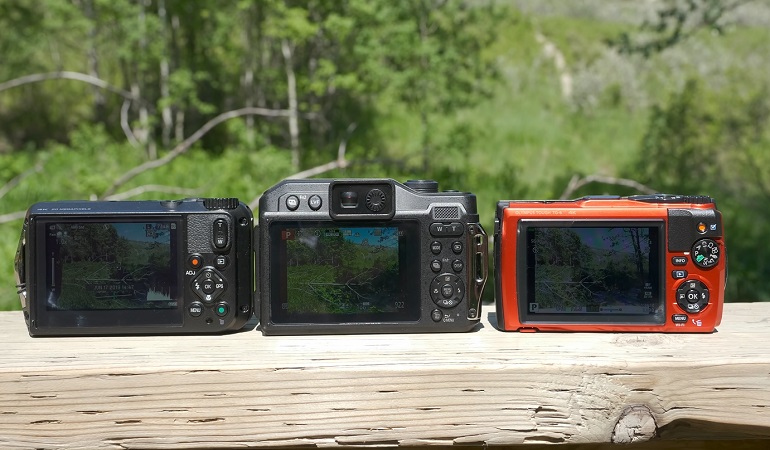
So technically speaking, it is worth every dime you invest in it and totally gives you your money’s worth. Because GoPro technology is not just for snowboarding, you can also use it when shooting a variety of other outdoor activities.
However, if you’re looking to shoot high-resolution great photos, a DSLR camera for snowboarding should be your first selection.
Mirrorless cameras are another possibility to explore as they are less bulky and high maintenance than DSLRs and capture footage in the same high photo quality standard. They are also more compact and easier to transport around here and there.
Sensor Quality
Sensors play a big role in maintaining high photo quality. A great camera for snowboarding that generates stellar image quality usually has a large sensor. Basically, the sensor is the canvas on which the light captured by the camera draws a photo on, and it resultantly is saved onto the memory card.
The resolution of your camera sensor is available in megapixels (MP) and is indicative of the size that your final image is going to be available in.
This is especially important for snowboarders who are looking to enlarge and frame their photos of winter sports and adventure, as the quality is maintained to a large extent.
However, don’t go too far with that thought, as 12 MP is more than enough to have you taking photos fit to be framed up into posters.
Most action cameras are known to have relatively small sensors, which results in limited bad picture quality. I, specifically, prefer full-frame sensors that are known to be bigger than most other types but promise the best clear photos and functionality.
Video
The 4K video hype has long been running and hasn’t yet died out! And for a damn good reason too. A 4K video is bound to give you the best video-quality experience for your snowboarding shenanigans.
However, when it comes to video quality and ensuring that your camera’s key features are tailored to produce an excellent video, check your camera’s frame rate.
The frame rate is indicative of the number of frames the sensor is recording per second. So, the higher the frame rates per second (fps), the clearer the footage and the more images a sensor can record, which means better and smoother video quality.
I always go for nothing lesser than 60 fps, so consider that your starting point.
However, when speaking in terms of an affordable price that everyone can easily manage, a 4K video camera, although an amazing camera type, is bound to bite a sizable chunk out of your bank. For those not capable to blow the bank on a mere 4K video, I’d suggest going for 1080p and 1440p HD resolution options.
For the most part, people can’t really tell the difference between a 4K video and a 1080p video. Unless or until you’re an expert on these matters, you won’t see any quality change.
Focal Length
I know that these things can get a bit technical and dizzy up your mind a bit, but stay with me! The focal length of your camera lens dictates how wide or narrow the captured scenery will be.
For example, a wide-angle lens has a short focal length and will shoot from a wider landscape perspective. On the other hand, a long focal length lens will primarily focus on a smaller and narrower part of the target scenery.
When it concerns outdoor activities such as snowboarding, skiing, mountain biking, and hiking, you need to capture wide-angle images. Therefore a short focal length is a perfect standard to opt for as it will take in parts of the surrounding that are crucial in setting the mood of the photo.
However, even with wide-angle lens camera equipment, if you need to specifically focus on a certain subject in an otherwise vast scenery, most cameras have a nifty zoom feature. You can utilize this function to adjust the focal length and focus on a certain area or subject only.
ISO
Digital cameras are known to have advanced features that refine and customize your shooting experience. ISO sensitivity is one of those overall key features. The ISO settings in your camera allow you to adjust the camera’s sensitivity in capturing light.
However, this is a delicate setting to be messing around with, as a little bit of an increase in the ISO meter could result in a lot of digital noise in your photography.
The higher your ISO settings are the lower your picture quality will be. When filming or shooting, I always keep my ISO level at 1600 as that is the perfect range to ensure no digital noise ruins my pictures.
However, on snowy days when the sun’s out, and there is plenty of light all around, you will need to lower the sensitivity a bit in order to allow the device to focus on key aspects of the scenery. Otherwise, the shots may come out very overexposed.
Image Stabilizer
Let’s face it! We’re only human, and we are highly susceptible to making mistakes.
That’s probably why the best models in the market provide advanced technology that is suitable to reduce the presence and effect of our little blunders. Electronic image stabilization is one of those key features you need to eliminate the shakiness, slight blurriness, and unintentional motion from your photography.
No human being can sit still as a statute, no matter how well you can hold your breath or steady your heart rate. Moreover, with outdoor photography, you can almost never get complete stabilization on your shots.
The image stabilization feature is always available on GoPro models as they help keep everything in focus and clarity even if it’s attached to your head and you’re zooming full speed downhill.
Water Resistance

When selecting snowboarding clothes…what’s the first specification you look for? Water resistance, of course! So why not keep up the same energy when it comes to your camera for snowboarding?
Cameras that come with waterproof housing are a spectacular option for snowy days outside where rain or sleet is expected at all times. However, even with all the waterproof housing in the world, you still need to take adequate measures to ensure that your camera stays dry and doesn’t get too wet.
Action cameras are famous for being manufactured waterproof without any additional housing options necessary. However, it is best if you use them with it.
Mount
Mounts are not just for camera tripods and selfie sticks! Action cameras like GoPro models need to be strapped onto your helmet if you are planning to make a first-person video montage. And for that, you need a proper mount.
However, that is usually included with your helmet and not the camera. So if your helmet lacks an inbuilt mount, you will probably need to purchase a better one or make it work with external accessories. Stuff like straps and adhesive camera mounts are your best shot to get your GoPro hooked up to your helmet.
Wifi
Yea, I know. Technology has spoiled us filthy. Back in the day, transferring a file from one device to another took 3 business days, and we were okay with that!
But now we can’t stomach the wait of transferring footage from an SD card to a laptop. And we’re okay with that too! ‘Cause WiFi cameras are a thing!
Wifi connectivity is a useful and very handy feature for action cameras as it takes the whole hassle of transferring out of the equation. Simply connect the action camera to a nearby Wi-Fi connection and you can have all your footage automatically transmitted at a way higher speed.
Not just that but WiFi cameras are essential in the sense that you can use this connection to hook your action camera to a laptop or tablet and view your photography on an enlarged screen. This will help you in understanding whether you like your footage, what to improve, and how to shoot better, and consequently you up your game.
This is specifically important when you are in the process of shooting a special session and are unsure of the resolution, end result…etc, and need to make necessary changes. So it’s best to take a sneak peek of your work on a big screen before commencing further.
Wi-Fi connectivity is yet another advantage for quick and easy posting to your social networks. When I tell you, it takes out all the struggle from copying, pasting, transferring, connecting…I’m being serious.
However, if there’s one noteworthy aspect it’s that connecting your action camera to Wi-Fi sucks the battery life right out of it. So be ready with a spare battery or a junction to charge up.
Battery

When it comes to shooting videos and high resolution pictures, your action camera battery life will not last for long hours. These cameras aren’t tough enough to go on for hours because they are compact, and similarly, the batteries themselves are small.
For example, an original GoPro battery barely goes up to an hour and a half. Any other action camera that may have come from a knockoff company wouldn’t even go up to an hour. So remember to keep spare batteries in your snowboarding gear bag or a portal charger.
On the other hand, a traditional DSLR could go up to 6 hours in photo capture mode, and maybe 3 hours in video mode. That’s because DSLRs have bigger batteries and resultantly longer battery life.
Weight and Size
Action cameras are famous for their compact bodies that make them easy and hassle-free to carry along since you’re probably already carrying a ton of other gear. The heaviest action camera in this list goes up to 10 ounces only. And that too is uncommon in the market, most do not go beyond the 7 oz range.
However, if you’re a professional photographer then action cameras are definitely not going to be your cup of tea.
Professional photographers are free to manage their huge DSLR cameras on their own, but you and I are going to tuck our handy action camera in our pockets and be on our merry way to the snow!
FAQs
What Cameras Do Snowboarders Use?
Depends! Each snowboarder has their different tactics, approach, and angles to capture whichever trick and ride the way they want to. However, GoPro cameras are very popular on the slopes as they exist in different variations and are feasible and easy to acquire. Not just that but also very user-friendly.
Is Gopro Good for Snowboarding?
Absolutely! You get everything you could possibly need in a compact and durable package. It is another outstanding advantage that a GoPro action camera promises you the highest quality in the market. And due to their popularity, you are bound to find many different types of such cameras increasing the variety you can choose from.
How Do You Record Someone Snowboarding?
When recording another individual on the slopes, the best angle you can maintain is from a downhill perspective. By accurately using the zoom feature on your action camera, you can focus on the individual zooming down the slopes, gradually decreasing the zoom until they are close by. This would create a great focus and zoom-in-out effect. A tripod also works wonders if you are planning to record yourself.
Final Thought
The world of outdoor cameras for action and sport is ever-expanding and changing but there are a few name brands that will continue to dominate the market. The above list incorporates the finest models in the current market for you to choose from. And if you find yourself truly lost in making a decision, read on to find out what camera features to focus on when purchasing.
0 Comments